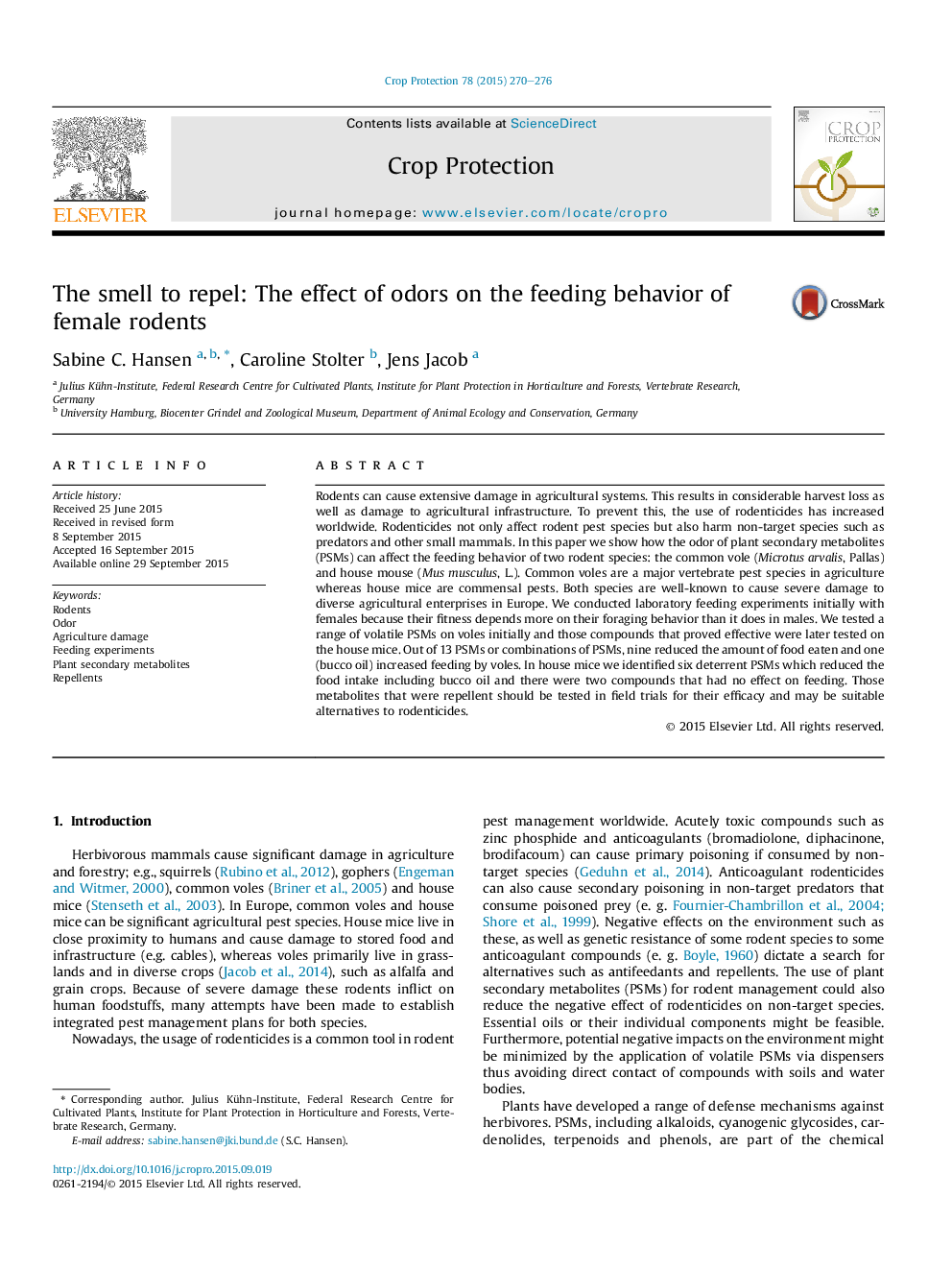| کد مقاله | کد نشریه | سال انتشار | مقاله انگلیسی | نسخه تمام متن |
|---|---|---|---|---|
| 4505697 | 1624309 | 2015 | 7 صفحه PDF | دانلود رایگان |
• Plant metabolites can act as repellents in female murid and female arvicoline rodents.
• Five deterrent substances were identified in female voles and house mice.
• We would suggest a species-specific response for both rodent species.
• Plant compounds could be used instead of rodenticides as they may bear lower environmental risks.
Rodents can cause extensive damage in agricultural systems. This results in considerable harvest loss as well as damage to agricultural infrastructure. To prevent this, the use of rodenticides has increased worldwide. Rodenticides not only affect rodent pest species but also harm non-target species such as predators and other small mammals. In this paper we show how the odor of plant secondary metabolites (PSMs) can affect the feeding behavior of two rodent species: the common vole (Microtus arvalis, Pallas) and house mouse (Mus musculus, L.). Common voles are a major vertebrate pest species in agriculture whereas house mice are commensal pests. Both species are well-known to cause severe damage to diverse agricultural enterprises in Europe. We conducted laboratory feeding experiments initially with females because their fitness depends more on their foraging behavior than it does in males. We tested a range of volatile PSMs on voles initially and those compounds that proved effective were later tested on the house mice. Out of 13 PSMs or combinations of PSMs, nine reduced the amount of food eaten and one (bucco oil) increased feeding by voles. In house mice we identified six deterrent PSMs which reduced the food intake including bucco oil and there were two compounds that had no effect on feeding. Those metabolites that were repellent should be tested in field trials for their efficacy and may be suitable alternatives to rodenticides.
Journal: Crop Protection - Volume 78, December 2015, Pages 270–276
